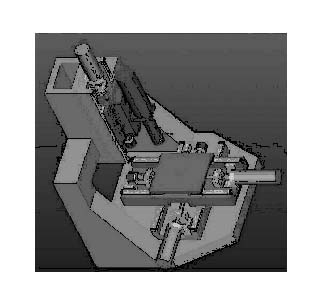
Teaching
Resources
Principles Of Precision Machine Design Applied To The Design Of A Desktop Milling Machine
Charan Sarjapur, M.S. University of Utah, August 2004
The manufacturing industry is in a trend of producing parts to the micro and nanometer resolutions. Making parts to these accuracy levels demands of special machines capable of producing parts to these tight specifications. There are a number of commercially available machine tools which are capable of producing parts to those tight specifications, but the main issue with these machines is their very high cost.
Discussed are the key elements that make a vertical milling machine. Methods of selection of all key machine tool elements are demonstrated. The accuracy of a machine tool is very important in precision machine design. Accuracy can be defined as the quantitative measure of the magnitude of error. Techniques of improving accuracy and yet maintain a low cost are discussed. Various machine tool elements such as the encoders play a vital role in contributing towards the accuracy and resolution of the final product. The various encoder options such as the linear encoders and the rotary encoders are analyzed, and then suitable selection criterion is be applied to select the best and yet cost effective one. A similar approach is taken for other key elements such as the linear bearings and the ball screw etc. Spreadsheets and a few analytical models are used during the element selection stages to justify their selections. The use of spreadsheets makes it easier for a designer to compare the different available options and pick a suitable one.
Errors are of major concern in precision machine design. Different types of commonly occurring errors are mentioned and discussed. Methods to overcome a few of these errors are mentioned. Concepts are generated during the concept generation stages and subsequent revisions are made to the concepts in order to improve the design. Effective use of a computer aided design (CAD) tool is demonstrated while generating models of the elements and assemblies. Pro/ENGINEER is used as the CAD tool during the design stages. Finally the approach of finite element methods (FEM) is applied to justify the final design. Both static and modal analysis results are used to validate the machine design. Pro/MECHANICA an analysis module of Pro/ENGINEER is used as a finite element analysis (FEA) tool during the analysis stages.

